Every few months or so, I like to do a bit of a scouting mission of my local u-pick auto parts place to look for inspiration for the next project.
I usually look for items that generally aren't very popular for anyone looking for parts for their car but may still serve some sort of useful purpose. (For example, this was one of the inspirations that spawned my Junkyard Clock project.
While car stereos in general are a popular item at the u-pick yard, most people tend to look for ones that have a CD player or other such high end features. This often leaves the "Old Plain Jane" AM/FM radio as something that tends to be overlooked and are actually quite plentiful in the junkyard.
I was in the market for a small radio that I could have on my desk at work, but I wanted something that was a little less plastic and a little more unique.
Step 1: Sourcing the Radio
Removing the Radio
My main goal was to look for the most basic radio that was available. Traditionally these sorts of radios can be found in the base models of commercial vehicles such as cube or cargo vans.
While most radios from any vehicle will work fine, I settled on the radio that was installed in early 2000's Ford vans (in the case of the radio that I got, a Ford E-450 cube van) The main deciding factor in selecting this particular radio was that I had found that the Ford radios had the smallest footprint (Radio dimensions are approximately 7.5"X 3.5"X 2"), which made it the best candidate for a table radio.
In practice, I didn't have much success with that approach, so an alternative method was be to pop out front trim of the dashboard with a slotted screwdriver (Remember to be careful not to damage the trim piece - lest someone else might need it!). With the dashboard popped out, I was able depress the retaining clips that was holding the radio in place, disconnected the wires that were connected to the radio, and popped the radio out of the dashboard.
With the radio removed from the dashboard, I used wire cutters to obtain the connectors for the wiring harness and antenna for the radio. When doing the cutting, don't forget to leave a reasonable amount of wire at the end of the connectors.
Initial Prep
Since the radio has spent its life in a work vehicle, the odds are that it has accumulated quite a bit of dirt. A good cleaning is probably in order.
First, using a Torx screwdriver, remove and discard the retaining clips that were used to secure the radio to the dashboard
With a damp cloth, also give the body of the radio a cleaning - particularly the buttons and knobs. Be careful that water does not get inside the radio.
Once everything is clean and dry, reattach the face plate to the radio and re-install the screws that hold the face plate to the radio
Step 2: Gathering up the Bits That You Need
As mentioned earlier, one of the main goals for this project was to utilize some of the scrap wood and various bits of electronic junk that I had left over from previous projects.
When I built the cabinet I cut out the wood pieces using some furniture grade plywood that I had laying around, but any type of wood would work well.
To build the table radio, you need the following:
Cabinet Parts List
- 2 pieces of 8 3/8" X 5.5" 3/4 inch Plywood (Good 1 Side) for the top and bottom of the cabinet
- 2 pieces of 5" X 5.5" 3/4 inch Plywood (Good 1 Side) for the sides of the cabinet
- 1 piece of 11" X 7" 3/4 inch Plywood (Good 1 Side) for the base of the cabinet 1 piece of 3.5/8" X 7 1/8 of 1/2 inch plywood for the back of the cabinet
- Iron on pine veneer
- 4 1.25 inch wood screws
- 4 3/4 inch wood screws
- Wood filler
- Paint / Stain
- Glue (white wood glue and hot glue)
Electronics Parts List
- AM/FM Car Radio
- 4 Ohm 10 Watt (Minimum) Speaker - make sure the speaker is no larger than the dimensions of the radio
- Radio wiring harness connector (Pulled from the vehicle when you removed the radio) Antenna connector (Pulled from the vehicle when you removed the radio)
- 6 feet of electrical cable - I used an old electrical cord with the plugs cut off.
- 12 Volt DC "Wall Wart" power supply - should be at least rated for 500 mA
- DC power socket - make sure it fits the connector on the wall wart power supply Connector wire
- Solder
Step 3: Building the Box
The next step is to build the cabinet that will house the radio and speaker.
Using the exploded diagram as a guide, cut 45 degree angles along the 5.5 inch edges of the sides, top and bottom pieces of wood with a table saw. If you use plywood for this project, make sure that you cut your 45 degree angles such that the good side of your plywood will be on the outside of your constructed box.
As a personal preference, I wanted the face of the radio into be recessed into the cabinet. After cutting the side angles, I then used my router table, and with a 3/8 inch straight bit, I put in a 3/8 by 1/2 inch slot along the inside edges of the side, top and bottom pieces where the front of the cabinet would be located when assembled.
Once the recesses have been routed, I used wood glue to assemble the cabinet by gluing along the 45 degree edges and clamping the edges together with corner clamps. Make sure that the box is square and that the routed slots are facing the front of your box as you are clamping the box together.
When the glue is dry, remove the clamps and do a test fit of the radio into the new cabinet. The radio should fit snugly, but should seat fully into the routed slots of the cabinet. If there are any areas of the radio that bind going into the cabinet, you can adjust the fit by removing some of the excess wood from the inside of the cabinet by using a wood chisel.
Step 4: Attaching the Back
Using the 3.5 X 7 1/8 piece of 1/2 inch plywood cabinet back, the next step is to create an opening for the speaker to be installed. For this project, I wanted the speaker to be installed on the outside of the cabinet, which meant that the magnet and cone of the speaker needed to fit through the back of the cabinet.
Speakers come in various magnet and cone sizes, so the hole needed to be a perfect fit so that the cone and speaker could fit through the back without leaving any "gaps" around the front edges of the
Once I found the right size container, I then placed the end of the container in the middle of the plywood back and traced the outline of the container's opening in the middle of the plywood. I then drilled a pilot hole in the middle of the circle that I traced with a drill press to allow access for the scroll saw. I then cut out the circle with a scroll saw.
Once the circle's been cut, install the plywood back to the back of the cabinet box with wood glue. The plywood back should fit snugly to the inside of the cabinet box.
Step 5: Making the Base
Once the edges have been applied, I then gave the base a good sanding and then applied 3 coats of stain and urethane.
Since I was using plywood, the edges would have the plywood layers apparent along the edges of the base, With the base stained, those layers did actually look pretty good, but I wanted the base to "pop" a bit more so I decided to paint the decorative edges in black lacquer. The lacquer was applied by masking the top of the base along the edge to be painted and applying the black lacquer with an artist's brush.
Once the paint is dry, remove the masking tape and the base is finished.
Step 6: Finishing the Cabinet
Moving my attention back the radio cabinet, I used some wood filler to fill in any cracks in the joints where the sides of the cabinet meet. When applying the wood filler, make sure to use only use enough
Alternatively, if you used solid wood for the cabinet, applying veneer isn't really necessary.
With the veneer applied and the cracks filled, give the cabinet a good sanding, after which the cabinet can be then painted or stained in the similar manner that was used for the base.
Step 7: Adding the Speaker and Power Connector
Once the cabinet is assembled, it's now time to install all the electronic components for the radio.
The first step of this process is that you will need to install the speaker and the DC power socket for the radio. If not already in place, take the time now to solder a few inches of lead wire on both the speaker and the DC socket. When soldering the DC solder take careful note which wire is negative and which one is positive.
to the cabinet by screwing in four 3/4 inch wood screws through the attachment holes on the speaker. Make sure the wires attached to the speaker are inside the cabinet.
To install the DC socket, drill a 1/2 inch hole in the lower right hand side of the cabinet. Install the socket by pushing it into the hole until it is flush with the back of the cabinet. Make sure that the wires attached to the socket are inside the cabinet. Using a hot glue gun, secure the DC socket to the cabinet by liberally gluing the socket with hot glue from inside the cabinet.
Step 8: Making the Antenna
The antenna is constructed with the surplus 6 foot electrical cord.
Start by cutting off the plugs of the cord, leaving just the length of 2 wire cord. Using a dowel as a jig, start wrapping the cord into a coil.
After a few turns, apply some hot glue on the coils in order to keep them in place. Once the hot glue dries, remove the wire from the dowel and continue coiling the wire until the wire is completely coiled but leaving a few inches of wire at the end. Secure the entire coil with hot glue. With wire strippers, strip the wires until you have about an inch of bare wire at the end of the cord.
The next step is to prepare the antenna connector for the radio to be attached to the antenna. Do this by removing some of the outer insulation from the wire on the connector with wire strippers.
Keep in mind that typically this wire will be a coax cable. When stripping the outside insulation, you will see braided wire with a second wire encased in insulation. Move the braided wire down to where the outside insulator has been cut and form it into a solid wire. Remove some of the insulation covering the inner wire, exposing that wire, Be careful that the braided wire and the inner wire do not short themselves out.
Connect the antenna connector to the antenna by soldering them together. When soldering, solder the braided wire onto one of the
Using the hot glue gun, apply a liberal amount of hot glue to the antenna coil and install the antenna in the cabinet by attaching the antenna to the magnet of the speaker - be careful that no glue ends
up on the speaker cone.
Step 9: Wiring it All Up
The final step is to complete the wiring of the radio and install it into the cabinet.
In the the case of our radio that came out of the early 2000's Ford van, we determined that the following connections were needed:
- Pin 1 - Radio Lights (you could omit if you don't want the radio to light up)
- Pin 2 - Ground
- Pin 3 - Ignition Start
- Pin 4 - Ground
- Pin 9 - Feed to Battery
- Pin 10 - Ignition "Run/Accessory" Pin 11 - Ground
- Pin 14 - Left Front Speaker (+)
- Pin 15 - Left Front Speaker (-)
- Pin 16 - Ground
Connect all the "Ground" wires together with a "rat tail" joint and solder them together. This will be considered the Negative Power wire
Connect the Radio Light, Ignition Start, Ignition Run/Accessory, and Feed to Battery wires together with a "rat tail" joint and solder them together. This will be considered the Positive Power wire.
The next step will be to solder the wires on the connector to the Power and speaker wires in the cabinet. Solder the Positive connector wire to the Positive wire for the DC Power socket. Likewise, solder the Negative connector wire to the Negative wire for the DC Power socket.
Next solder the speaker wires on the connector to the speaker.
This time the radio is now ready to be installed into the cabinet. Plug in the wiring harness connector into the radio followed by the antenna connector.
Tidy up the soldered connections with electrical tape and install the radio into the cabinet by pushing it into the cabinet until it is firmly seated into the cabinet.
Step 10: Ready to Rock and Roll
The radio is now ready to make sound. Plug the wall wart power supply into the DC socket, plug in the wall wart into the nearest electrical socket and you're rocking and rolling!
I found this to be a very easy project to do over a weekend, while at the same time making good use of things that would have likely been thrown away!




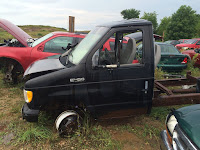







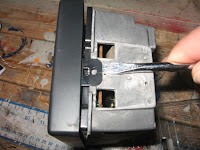




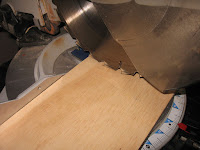


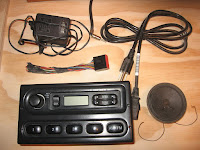
















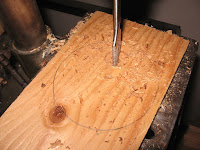
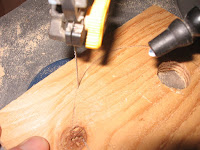


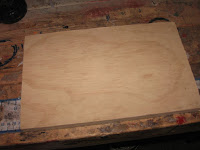





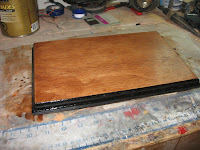




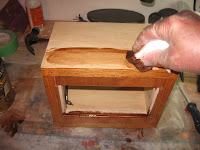



















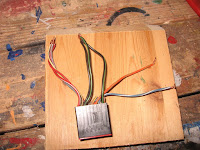





No comments:
Post a Comment